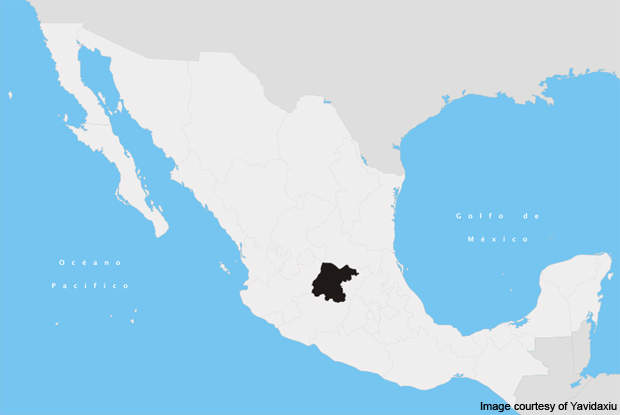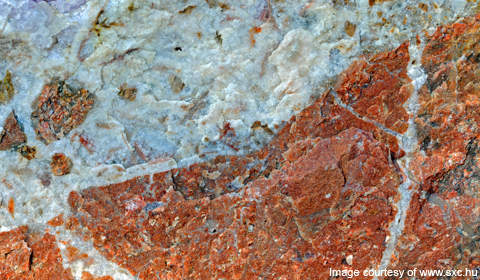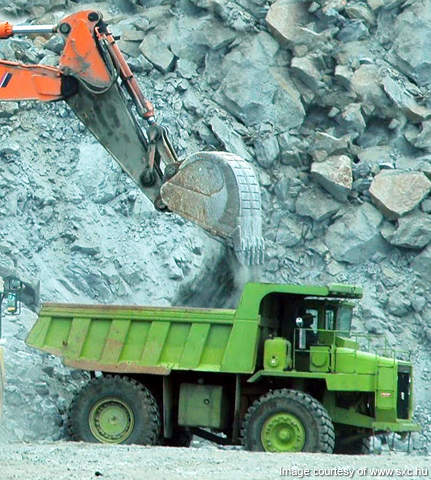
The El Cubo Mine is an underground gold-silver mine located in El Cubo village, approximately 10km east of Guanajuato city in Mexico. Endeavour Silver Corp acquired the mine from AuRico Gold (previously Gammon Gold) in July 2012.
The property is spread over 8,146ha and consists of 61 exploitation and exploration concessions. El Cubo also took under lease the adjacent lying Las Torres mine and mill complex owned by Industrias Penoles. The property has been a prolific producer since it was discovered in the late 1700s. As a large part of the property has remained unexplored, the mine continues to have immense potential.
Operations at the mine were suspended for an indefinite period on 3 June 2010 due to a labour dispute by union workers that resulted in the dismissal of 397 employees. A retaliatory strike was launched on 30 June 2010. This strike was declared illegal by the Federal Labour Board on 4 October 2010.
Endeavour Silver launched a $67m capital investment programme at the mine in the third quarter of 2012. The programme involves further exploration and development of the mine, and rebuilding and expansion of the plant. The plant rebuilding was completed in May 2013.
Two newly mineralised areas were discovered at the mine in September 2013. The new areas have been put to fast track development and exploration drilling is being conducted.
El Cubo mine reserves
The proven and probable reserves of the mine are estimated at 6.3 million ounce (Moz) of silver and 101,100oz of gold.
Measured and indicated resources at the El Cubo mine are 4.4Moz of silver and 76,700oz of gold.
Geology of the El Cubo mine
The mine lies within the eastern part of the Guanajuato mining district, a 20km-long and 16km-wide area that represents one of the most productive silver districts in the world. The eastern part of the district lies beneath a sequence of Mesozoic to Cenozoic aged volcano-sedimentary rocks. The sequence is intruded by three main north-west trending silver rich vein systems that extend between 10km and 25km along strike. Known as La luz, Madre and La Sierra, the veins systems host gold and silver in ratios ranging between 1:72 and 1:214.
Related project
Escondida Copper, Gold and Silver Mine, Atacama Desert, Chile
The Escondida copper-gold-silver mine is located in the arid, northern Atacama Desert of Chile.
The veins are not specific to any rock type and occur in all the formations. The project area contains approximately 38 veins that occur from an elevation of 2,650m down to an elevation of 1,730m.
The principal rocks hosting the ore shoots include Guanajuato Conglomerate for the lower ores and Bufa Rhyolite for the upper ores. The fault-associated deposits occur as open-space fillings in fracture zones or as impregnations in the regionally porous wall rocks.
Veins hosted in the relatively open spaces are the primary mining targets. Other viable targets include near-surface weak stockworks that grade into disseminations.
Mineralisation
El Cubo contains a low sulfidation mineralised system with pyrite but no arsenopyrite. Except for trace amounts of chalcopyrite, base metals in the mine area are absent. The mineralised zones extend up to 200m long and 100m deep. Economic grade mineralisation, however, extends until a depth of 550m.
Mining at the Mexican gold-silver mine
El Cubo is mined by conventional drill and blast methods. Access is provided through adits, ramps and shafts. Although long hole stoping is used, the veins are mined through a resuing cut and fill method. The mine has 94 jacklegs, three Boart Stopemate 2006-3 drills and a host of other mining equipment supplied by Cominvi and Jasso.
In the cut and fill method, ore is accessed through a ramp and a drift that is driven along the length of the ore zone.
Stope mining begins from the drift by drilling uppers of the ore zone in the back of the drift and then blasting. The broken ore is removed via scoop trams. To operate scoop trams in the narrow ore zone, the wall rocks are drilled and blasted after the broken ore is removed. Waste rock is left in the stope as fill. The stopes are also filled with development waste rock and deliberately mined waste wall rocks.
Processing method
Conventional means including crushing, grinding, flotation and cyanidation are adopted to process the ore. Gold and silver recovery is done through the Merrill-Crowe process. Ore processing took place at the Las Torres mill, which opened in 2007, but the mill’s lease expired in May 2013. The ore processing is now being carried out at the rebuilt El Cubo plant.
Prior to Las Torres mill, the ore was processed in three milling facilities, which included two flotation mills and one cyanidation mill. While the flotation plants were closed, the cyanidation plant is still operative and is used to process the concentrate and produce dore bars.






